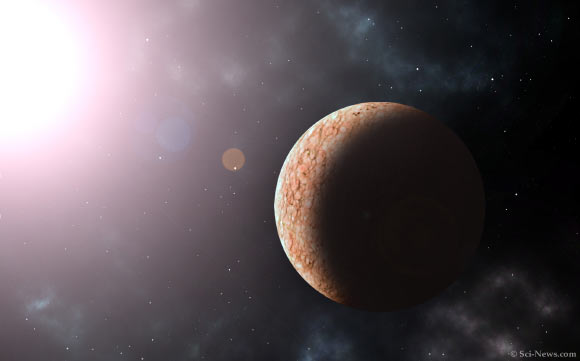Using data from NASA’s Kepler/K2 mission, the SPECULOOS telescopes and the High Resolution Echelle Spectrometer (HIRES) on the Keck I telescope at W.M. Keck Observatory, astronomers have discovered a transiting Earth-sized planet in a close-in orbit around the red dwarf EPIC 249631677.
Source: Sci News
EPIC 249631677 is an M3.5-type dwarf located 185 light-years away in the constellation of Libra.
Otherwise known as TIC 70298662 or 2MASS J15120519-2006307, the star is over one billion years old.
It has a temperature of around 3,000 degrees Celius (5,500 degrees Fahrenheit) and is about 5 times smaller and less massive than the Sun.
“For this work, we revisited the Kepler/K2 data, a mission which ended only in 2019,” said MIT astronomer Prajwal Niraula and colleagues.
“We reanalyzed the light curves of stars with temperatures less than 3,200 degrees Celius (5,800 degrees Fahrenheit), a magnitude less than 15, etc.”
“While these criteria were motivated particularly to look for planets around ultracool dwarfs, they were relaxed in order to allow room for errors in the stellar properties and improve completeness of the analysis.”
“Among the 1,213 stars fitting these criteria, EPIC 249631677 presented the strongest periodic transit-like signal.”
“We observed three additional transits of the planet with SPECULOOS Southern and Northern Observatories, and a stellar spectrum from Keck/HIRES, which allowed us to validate the planetary nature of the signal.”
The newly-discovered alien world orbits its parent star with a period of 3.14 (i.e. ~π) days.
Officially known as EPIC 249631677b and nicknamed π-Earth, the planet is just 5% smaller than Earth.
It has an estimated surface temperature of around 190 degrees Celsius (370 degrees Fahrenheit) — too hot to host life as we know it.
“EPIC 249631677b is well suited for comparative terrestrial exoplanetology,” the astronomers said.
“While terrestrial exoplanets transiting ultracool dwarfs present the best opportunity for atmospheric studies with the James Webb Space Telescope, those orbiting mid-M dwarfs within 330 light-years such as EPIC 249631677b will become increasingly accessible with the next generation of observatories (e.g., HabEx, LUVOIR, OST).”
The team’s paper will be published in one of the AAS journals.
Source: Sci News

































Leave a Comment
You must be logged in to post a comment.